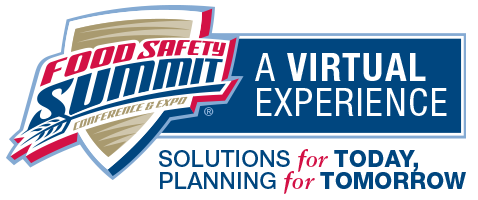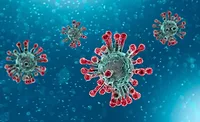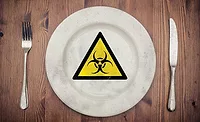2020 STATE OF THE INDUSTRY
State of the Industry in Food Safety: Software & Technology

Software and technology are often crucial components of food safety plans. These technologies factor into aspects of food safety plans related to traceability, as well as in product development and manufacturing.
Fostering better traceability
A key strategic goal for the industry is to use food safety technologies to product recalls and foodborne illness outbreaks.
Faye Feldstein, senior consultant, Deloitte Consulting, presented at the 2020 Food Safety Summit on this topic in a session entitled “Supply Chain Traceability: Collaboration, Momentum and Food Protection.”
The session at the Food Safety Summit focuses on three areas. “The general purpose of the Food Safety Summit is to help give people tools they need to do their jobs better and to advance food safety and public health,” says Feldstein. The session features three speakers, and then a roundtable question-and-answer session. The first speaker offers a “Traceability 101” discussion. The second session is from an industry perspective—lessons learned, reflections on implementation of improved traceability in our company, etc., Feldstein says. The third speaker is from FDA, sharing perspectives, plans, and vision for the “New Era of Food Safety” blueprint. FDA’s “New Era of Food Safety” includes discussion of technology-enabled traceability.
Food Safety Summit on Demand

Supply Chain Traceability: Collaboration, Momentum and Food Protection
Presenters:
- Suzy Sawyer, FSQR Digital & Analytics Lead, Cargill, Inc.
- Wendy Henry, Managing Director, GPS Blockchain Lead, Strategy and Analytics, Deloitte Transactions and Business Analytics LLP
- Andrew Kennedy, Traceability and Emerging Technology Team, FDA
- Faye Feldstein, Senior Consultant, Deloitte
Feldstein notes that the food industry and federal regulatory agencies like FDA have been working in partnership to improve traceability for at least the past 15 years. The faster that food supply-chain stakeholders can identify the specific source of a food problem, the better, she notes.
“The faster you can find out where food has come from and where food was distributed to, and the faster that potentially adulterated food can be removed from commerce. That improves public health and reduces consumer exposure,” Feldstein says.
Pinpointing foodborne pathogen outbreaks can help reduce collateral damage in the industry. “In the lettuce outbreaks in 2019—there were two pretty big ones—it was a challenge to try to figure out exactly where that romaine lettuce was coming from,” says Feldstein. “In that case, there is an economic impact to the larger industry as a whole when the public health officials have to say, ‘Do not eat any.’”
Looking for quick answers on food safety topics?
Try Ask FSM, our new smart AI search tool.
Ask FSM →
While public officials sometimes must resort to using such overly cautious statements, they can unnecessarily hurt impact product sales and damage company reputations. “There is the impact on the consumer confidence in that product, regardless of where it came from,” says Feldstein. “So, the sooner it can be pinpointed, the better.”
Feldstein says there are three kinds of foundational requirements to continue to move forward with improving the traceability process, and those requirements are happening now.
“The first kind of foundational requirement is finding a way for supply-chain stakeholders, both private sector and public sector—as needed from a regulatory perspective—to collaborate and share their upstream and downstream supply-chain information, while they are respecting their boundaries,” says Feldstein. The boundaries that must factor into workable plans include aspects related to legal protections, commercial confidentiality, etc., she notes.
The second foundational requirement focuses on the need for continued work on implementing a common framework, language, and/or criteria for what information is important when seeking to trace the product upstream and downstream, says Feldstein. “We need to get general agreements on what those elements are. There is a lot of information out there.”
Feldstein says that the third foundational element is has to do with technological foundations to support this upstream and downstream traceability. The technology needs to work within a company and its existing infrastructure—software foundations that are interoperable across the supply chain, she says.
There is work currently going on for all three of these foundational elements to improve recall and outbreak responsiveness. This work is driven by the industry, including regulatory authorities, trade associations, academic institutions, etc. Globally, everyone is looking at how can we do a better job with traceability and still respect everybody's position, she notes.
Pandemic points
“Interestingly, the coronavirus pandemic even further highlighted the need for traceability because of the supply chain disruptions that we had as a result,” Feldstein says.
For example, it was important in order to keep food moving and to keep people fed. As the standard supply chain and pathways of distribution changed due to COVID-19 disruption, for instance, companies sought to fill gaps in their retail offerings in whatever ways they could. “Therefore, perhaps a package that was intended for foodservice ended up in a retail store, so people could get food they needed,” says Feldstein. But that packaging might not feature the type of labeling required for a retail product.
“So, FDA and the industry had to work together to be flexible enough to allow that to happen, so the food could move. Finding where that food was and being able to understand where it is in the supply chain and how they could move it to where it needed to be even further highlighted the need for an improved traceability technology system,” Feldstein adds.
We need reliable, comprehensive traceability systems when all systems are operational, but those systems must be robust enough to handle traceability tasks when a crisis hits.
The New Era of Smarter Food Safety
Feldstein says that in the “New Era of Food Safety” blueprint, the FDA has indicated they are going to issue the regulation that was initially required of them by the Food Safety Modernization Act, formalizing that common language and criteria.
The core message is that food processors increasingly digitize production. To keep pace with this evolution, FDA is taking a new approach to food safety, leveraging technology and other tools to create a safer, digitally traceable food system, with the ultimate goal of reducing the incidence of foodborne illnesses.
FDA’s “New Era of Smarter Food Safety” outlines goals to enhance traceability, improving predictive analytics, responding rapidly to outbreaks, addressing new business models, reducing food contamination, and fostering development of a stronger food safety culture.
New digital technologies offer the potential to help the industry predict and prevent food safety problems and better detect and respond to problems when they do occur. Whenever possible, FDA has noted that it will work with stakeholders to explore low- or no-cost options to include food operations of all sizes.









